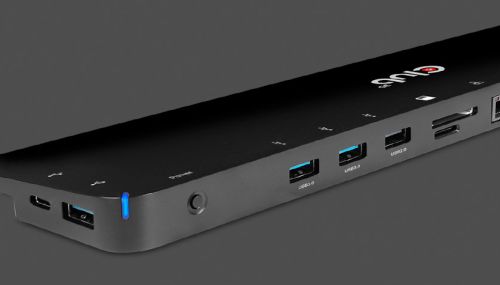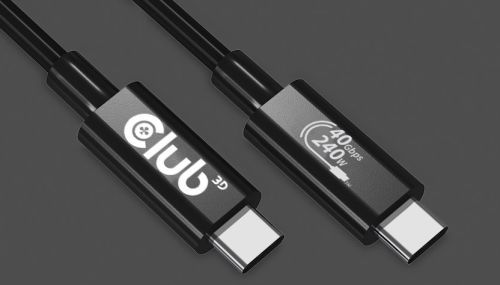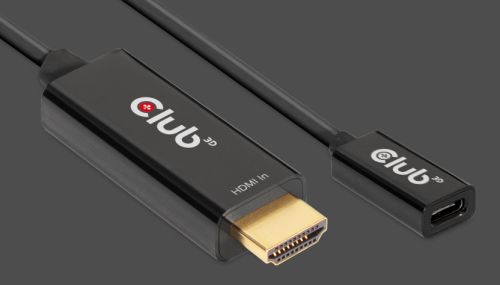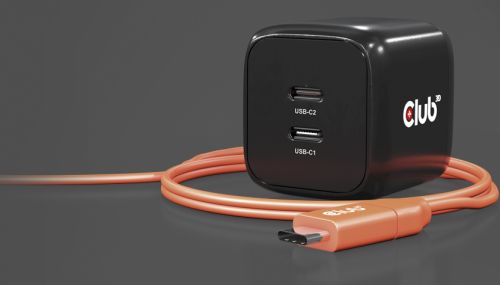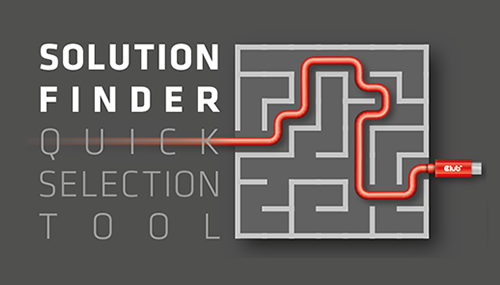What is MST?
DisplayPort 1.2 introduced an innovative and unique feature of multiple independent video streams called Multi Stream Transport (MST). It enables the source system to send multiple independent Video Signals over a single DisplayPort 1.2 output. This enables multiple monitors to be used via a single DisplayPort connector/output. This function requires either monitors that are capable of DisplayPort 1.2 daisy chaining or use of a DisplayPort.
MST hub. MST hubs are sometimes also called MST splitters or DisplayPort Splitters. With the introduction of USB Type C comes the support for DisplayPort Alt Mode. This allows MST functionality support. DisplayPort Alt mode can be supported for version DP1.2 and DP1.4.
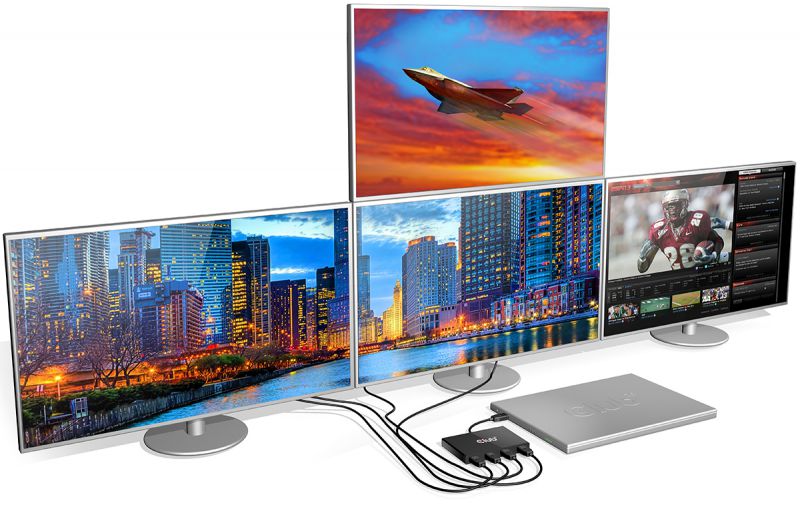
How many displays can I use?
The number of supported displays is mainly determined by the available bandwidth and of course also depends on the resolution on each display and when using an MST Hub, on the number of video outputs of the MST Hub.
With a DisplayPort 1.2 to 4 x DisplayPort you can go up to 4 x 1920x1080 at 60Hz. With the recent introduction of MST Hubs supporting DP1.4 the increase of bandwidth allows to reach up to 2*4K60Hz resolutions. And with the added support of DSC1.2 this can be stretched to 3*4K60Hz resolutions. Our MST hub CSV-7300 will decompress the DSC 1.2 signal from the source device as long as this is supported. The same goes for our CSV-1550 with a USB C input. This product does the same (3x 4K60Hz) as long as the source supports DP1.4 Alternate Mode. One of the advantages is that it is powered through the USB C connection, hence no need for external Power.
Bellow you may see an example with the Club3D CSV-6400
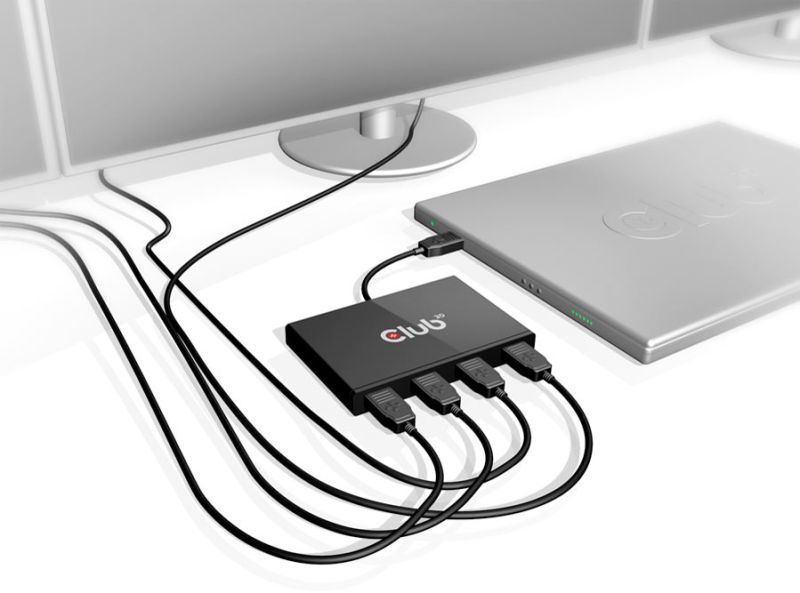
How Does it Work?
The DisplayPort output of your device shall be either 1.2 or higher version or it shall support Multi Steam Transport (please consult with the GPU manufacturer). The graphics driver controller of your system will take care of the rest, such as setting up the monitor position, resolution etc.
Multi-Stream Transport can be leveraged using two types of system designs. With daisy-chainable displays, each of the displays in the daisy-chain configuration, with the exception of the last display in the chain, must have DisplayPort 1.2 receivers and transmitters in order to send and receive video stream that is addressed to itself and the others down the chain. Once the monitor extracts the video and audio stream addressed to it, it will then transmit the rest of the video and audio streams down the chain. Each daisy-chainable monitor must have knowledge of the entire chain. MST hub will split the total bandwidth from a DisplayPort 1.2 output and allow you to send up to 4 independent 1920x1080 signals at 60Hz. The Club 3D MST Hubs are able to distribute those video signals (with sound) to the connected screens. Using this type of configuration also allows the use of screens with different inputs.
To support screens with inputs such as DVI or HDMI you must use passive adapters. For use of screens with VGA inputs, the adapter can be an active one.
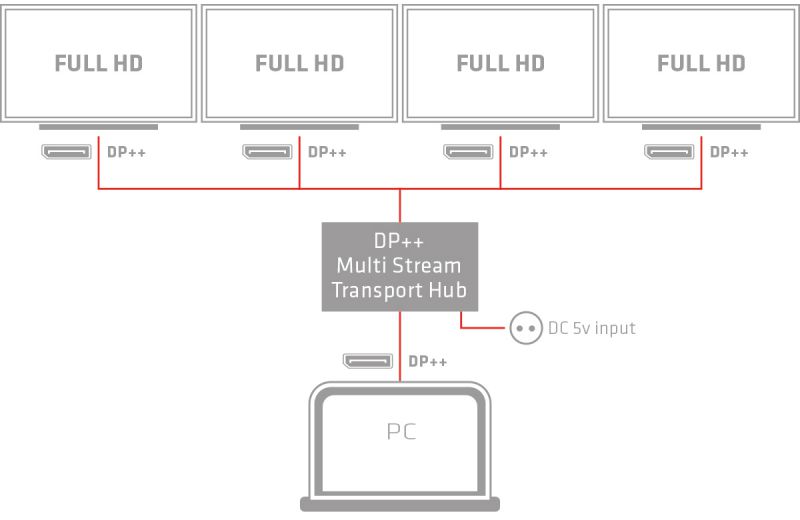
Please refer to a full overview of our Legacy Terms and Conditions on www.club-3d.com.

 Deutsch
Deutsch Español
Español Türk
Türk

